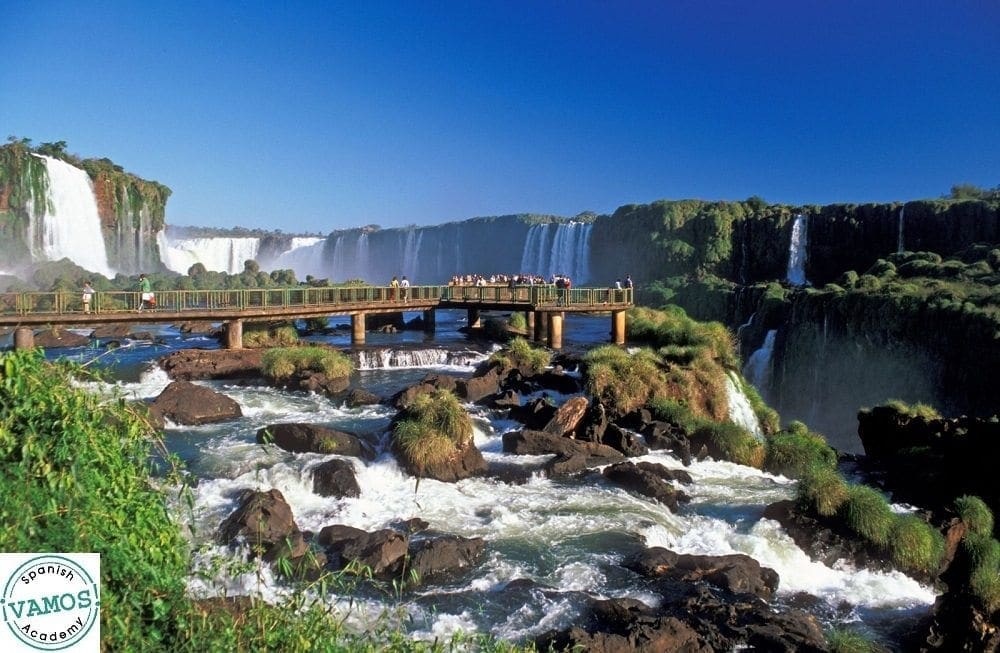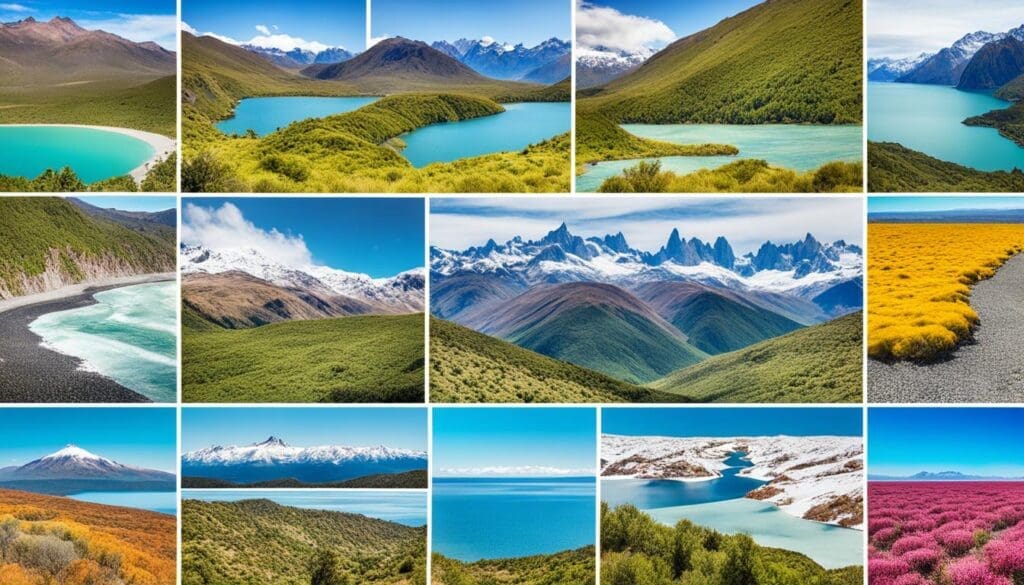Ever wondered how one country can have so many different kinds of weather? Welcome to Argentina, where you can go from freezing in the Andes to sweating it out in the subtropical north—all in the same trip. It’s like nature couldn’t decide what to do, so it did everything.
In the far south, Patagonia is a place where the weather has a mind of its own. One minute, you’re battling cold winds, and the next, you’re enjoying a mild, sunny day. Head north, though, and you’ll find yourself in a lush, green paradise that feels like a completely different world. And in between? There are vast areas that barely see any rain, yet other regions where the weather is steady and warm, perfect for just about any adventure.
Argentina’s Diverse Climate Zones: From Mountains to Plains
Argentina is a land of extremes, stretching from the towering peaks of the Andes to the expansive Pampas plains. Each area has its own unique weather, making it a dream destination for anyone who loves variety.
The Subtropical North: Where Lush Green Meets Vibrant Life
If you’re into warm, humid weather and stunning biodiversity, Misiones in Argentina’s subtropical north is your spot. This region is famous for the Iguazú Falls—a place that’s as breathtaking as it is powerful. The falls are surrounded by tropical forests, home to hundreds of bird species and other wildlife. But, like all beautiful places, it’s not without its challenges. Power plants upriver in Brazil can mess with the water levels, which shows just how delicate this ecosystem is.
Despite these hurdles, Misiones is a conservation success story. The warm, wet climate not only nourishes the lush forests but also supports a diverse range of species, making it a must-visit for nature lovers.
Patagonia: Argentina’s Wild, Windy Frontier
Let’s head down south to Patagonia, where nature doesn’t just exist—it dominates. This region is famous for its extreme weather, and it’s not uncommon to experience all four seasons in a single day. The ‘rain shadow’ effect creates valleys that are perfect for farming, especially for growing the grapes that produce Argentina’s world-renowned wines.
Patagonia might be harsh, but it’s also incredibly rewarding. The mix of dry winds and unique weather patterns creates a landscape that’s perfect for agriculture and offers some of the most breathtaking views you’ll ever see.
The Humid Pampas: Argentina’s Agricultural Powerhouse
The Pampas is where Argentina’s agricultural magic happens. This vast, fertile plain is the backbone of the country’s farming industry, producing the grains and livestock that make Argentina a global food powerhouse. The climate here is temperate, with just the right mix of rain and sun to keep the fields thriving year-round.
Over the years, the Pampas has seen incredible growth in crop production, especially in wheat and soybeans. With a growing focus on sustainable farming practices, the future of this region looks even brighter.
The Andes: The Mountain Range That Shapes a Nation’s Climate
The Andes Mountains are more than just a pretty backdrop—they’re a major player in Argentina’s climate. These towering peaks create rain shadows that lead to dry conditions in some areas and lush, fertile lands in others. Understanding the weather patterns in the Andes is key to grasping the diverse climates that make Argentina so unique.
Researchers have found that the climate along the Andes is incredibly varied, from snowy peaks to arid valleys. This diversity has a big impact on everything from farming to the everyday lives of people who live in these regions.


Climate Change: The Challenges and Opportunities for Argentina
Like the rest of the world, Argentina is feeling the effects of climate change. The weather is becoming more unpredictable, with more frequent extreme events like droughts in the Pampas and sudden temperature drops in Patagonia. These changes are challenging, but they also present an opportunity for innovation.
Argentina is working hard to reduce its greenhouse gas emissions and is looking towards clean energy sources like lithium for electric vehicles. By making these changes, the country is not just protecting its environment—it’s setting itself up for a more sustainable future.
Wrapping Up: Why Argentina’s Climate Matters
Argentina’s climate is as diverse as its landscapes. Whether you’re exploring the tropical north, the wilds of Patagonia, or the fertile plains of the Pampas, there’s something unique to discover. This diversity is what makes Argentina so special—and so important to protect as we face the challenges of climate change. Understanding the country’s varied climates isn’t just interesting—it’s crucial for planning, sustainability, and appreciating the incredible beauty that Argentina has to offer.
FAQ
What are the major climate zones in Argentina?
Argentina has several climate zones. The north is subtropical. The central Pampas region is temperate. The south, known as Patagonia, has cold and arid climates. The Andean west has arid and semi-arid zones.
How do climate zones affect Argentina’s weather patterns?
Climate zones shape Argentina’s weather. The north enjoys hot and moist tropical climates. Whereas, the south experiences cold, windy, and dry conditions. Seasonal weather changes and rainfall patterns are also influenced by these zones.
What is the climate like in the subtropical north of Argentina, particularly in Misiones?
In the subtropical north, like Misiones, it’s warm with high humidity. Temperatures stay high all year. The area gets plenty of rain and has tropical forests. This has led to rich biodiversity and unique ecosystems, such as those around Iguazu Falls.
What role do the Andes Mountains play in Argentina’s climate?
The Andes Mountains greatly affect Argentina’s climate. They create rain shadows, which cause arid conditions on their lee side. On the windward slopes, conditions are moist. This contrast impacts agriculture and wildlife by offering both dry and fertile areas.
Why is Patagonia’s weather considered unique?
Patagonia’s weather stands out for its fast-changing conditions. It has cold, dry winds. There’s a big difference in weather between seasons. These changes impact both the ecosystems and human activities like farming and tourism.
What is the significance of the Pampas region’s climate for Argentina’s economy?
The temperate climate of the Pampas is vital for Argentina’s economy. Its fertile lands are great for growing crops such as wheat and soy. They’re also perfect for cattle ranching. This makes Argentina a key food supplier worldwide.
How does the climate in Mendoza contribute to its wine production?
Mendoza’s climate is perfect for grapes. It has mild, dry conditions with warm days and cool nights. These conditions allow grapes to ripen slowly and evenly. That’s crucial for making high-quality wines in the region.
How does Argentina classify its various climate regions?
Argentina sorts its climates based on temperature, rainfall, and geography. This system helps people understand the country’s different weather conditions. By doing this, Argentina can map out its varied climates into distinct categories.
What are the potential impacts of climate change on Argentina’s diverse environments?
Climate change poses big risks to Argentina. It could lead to Andean glaciers melting quickly. The Pampas might see more droughts and floods. Patagonia’s weather could become even more unpredictable. These changes threaten farming, wildlife, and people’s lives.






